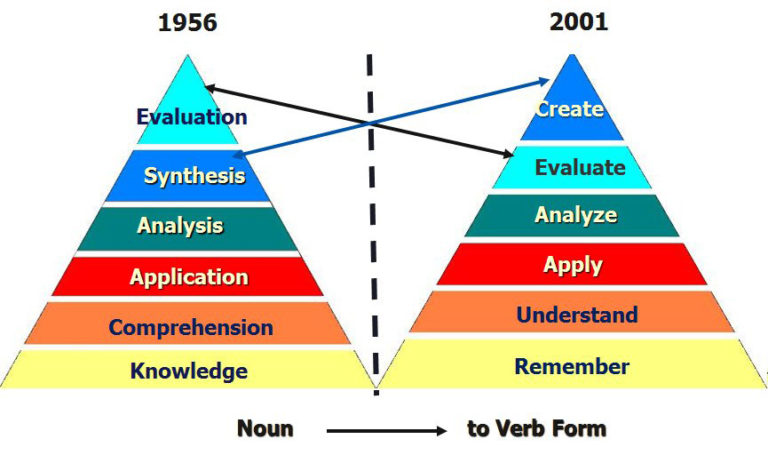I had no idea that the definition of assistive technology (AT) was so far-reaching -- that there are so many options for helping people overcome difficulties so that they can learn and live their best lives. I was surprised that I depend so much on assistive technology because of the arthritis in my hands and because I am very severely nearsighted. I use pens that are easy to grip when my arthritis flares up. I am constantly zooming in on text on-screen. If it weren't for that seemingly little thing, being able to zoom in, my face would need to be awkwardly close to the screen. And if I was a child in a classroom, I would probably feel self-conscious for needing to lean so close to the screen.
I appreciate how low-tech assistive technology can be as well. For example, if a student is having trouble focusing on reading a paragraph, using a slip of paper to block out everything except for the sentence the student is currently reading can make the paragraph seem less intimidating. It's easier to focus on one sentence at a time.
One benefit of the low-tech aspect of some AT comes from the potential embarrassment a student may feel about needing AT. A piece of paper can go under the radar and the student doesn't appear to be using any sort of assistance when reading the paragraph. However, ideally, in my classroom, I would make sure there was no shame in using assistive technology. I would share my experiences using it. It just wouldn't be a big deal, even though helping students achieve their educational goals is a big deal.
A commonality I found among the AT I read about was empathy. People empathized with vision impaired individuals and invented the amazing Orcam My Eye2, which is small enough to attach to someone's glasses and yet it has so much power because it enables them to read or helps with facial recognition. A beautiful moment that I've seen shared on YouTube is when a baby first experiences what it's like to see through glasses. The glasses are carefully placed on the baby's face and then a huge smile spreads. No words needed. To be able to see, the moment when vision improves, is profound and points to the enormous impact assistive technology has in empowering people to experience the whole wonderful sensory menu the world has to offer.
Assistive technology seems like an optimistic field. And a field in which people are at their best -- helping each other. A man with Parkinson's disease was having trouble taking his medicine because the pills were so small that his trembling hands really struggled getting a hold of them. Taking his medicine was super stressful and stress can exacerbate Parkinson's symptoms. The man posted a video of him struggling to take his pills. The Internet then did something beautiful.
Someone with graphic design experience saw the man's video and sketched out a prototype pill bottle that would enable the man to take his pills without worrying about holding the tiny items. But this graphic designer didn't have a 3-d printer to make the bottle. Someone else did, however. Lots of people. The initial design was faulty, but people worked together to fix the problems. The design is still evolving, but it is now usable. And because it's a community driven project, the bottles are not for profit. Here's an article about this story.
To me, the heart of being a teacher is being a helper. Learning about assistive technology has been inspiring. I also love how project-based lessons turn out to be so helpful to students with special needs, students with ADHD, or second language learners (SLL), and even gifted students. I love how projects open up opportunities for kids to participate that normally wouldn't be able to do so. For example, how SLL can use visual art to communicate, or how special education students can access relevant alternative assessment through acting out learned material. The key to projects working is that they are focused on teaching specific content and that students are assessed throughout the project. Also, according to Tomlinson's principles of differentiation, successful class projects feature "flexible grouping" and "teachers guide the exploration."
About gifted students, I had never thought of how adding extra work was sort of shortchanging them of truly engaging learning opportunities. I wrote a lesson plan and I listed as a differentiation that gifted students could do extra research on a topic. Now, after reading through this module, I realize how cursory that differentiation is. In order to really amp up a lesson for gifted students, I would need to focus on content, process, and product -- offering different ways for students to engage with the content, different "sense-making activities or processes" through which students can make knowledge their own, and a variety of ways to demonstrate what they've learned. These are matters that deserve careful, deep thought. And it's important to look at my students, to, as one article mentioned, pre-assess their needs, and to check to see if they've already mastered content.
Paying attention to students' needs is key here. Whether it's finding the right AT to help a reader focus or planning smart scaffolding that builds students up and then lets them fly, the teacher has such a crucial role. I am in the classroom with these people. And I am lucky enough to get to know all my differently wonderful future students. Being in such close proximity with students will give me insight into their needs and how I can best intervene to help them overcome whatever issues they're facing so they can engage with and enjoy school. I want to create moments for my students that are like those moments when the babies get their first pair of glasses -- when they realize limitations are melting away and possibilities are blooming.

